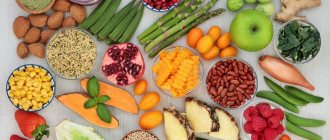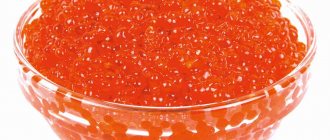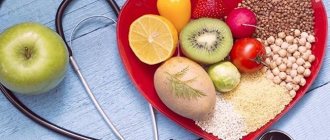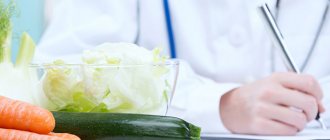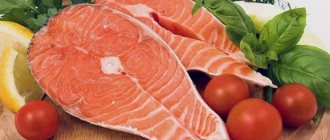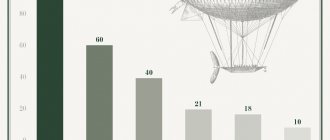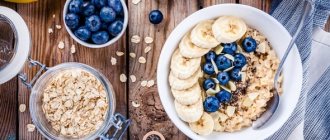"Ketosteril" is now one of the most effective and best drugs for stabilizing creatinine levels in the blood. Take 4 to 8 tablets 3 times a day with food, if prescribed by a doctor.
Alpha lipoic acid supplements can also help reduce blood creatinine levels. It neutralizes toxins, which include creatinine.
What affects the amount of urea in the body?
It is worth noting that urea and uric acid are different components. Urea is the result of the breakdown of proteins with amino acids and a number of other compounds. Normally, it occurs in the liver, then enters the kidneys with the blood flow.
Uric acid is produced in the liver, brain and blood due to the breakdown of purine compounds. But both components are aimed at removing nitrogen compounds - ammonia - from the body. Therefore, they are combined into one category.
Diet directly affects the level of urea in the body. The amount of protein breakdown products is also affected by physical activity, as well as the time of day. Therefore, from time to time, during the day, its indicator may differ. But this does not affect the body in any way. The exception is if the norm is exceeded by 2-3 times.
Significant excess occurs when eating foods with high levels of purines. This includes animal proteins, often meat.
The norm for this component is 600-1000 milligrams. This is also affected by the age, height and weight of the individual.
We can also talk about an increase in urea in the body, if we are talking about the functionality of the kidneys and liver, a violation of the water-salt balance, as well as the balance of potassium with sodium in the blood.
Folk remedies how to lower creatinine in the blood
Plants and tinctures tend to lower creatinine levels. However, with such treatment you should consult a doctor.
- Herbal teas - tea, which is based on herbal tincture, lowers creatinine.
For this you should use dandelion tea. You should consume approximately two cups daily. There is no need to overdo it, everything should be in moderation.
- Mint infusion. Take a few mint leaves and dry them first. Heat the water until hot and pour in the mint, let it brew for two hours. Strain the tincture and drink throughout the day.
- Nettle improves the kidney filtration process. Nettle can be made into tea, tincture, or taken in tablet form.
It is important to maintain normal creatinine. If it is very elevated, then everything should be done to lower it, and vice versa.
Signs of an elevated level
There are no specific specific signs that would indicate an increase in the level of urea in the blood. More often, at the initial stage, an increase in urea in the body manifests itself in the form of an allergic reaction - a rash on the body. This process can occur asymptomatically, but subsequently develop into a disease. The most common of them include:
- urolithiasis;
- rheumatism with arthritis;
- psoriasis with eczema;
- atherosclerosis as a consequence of a violation of plasma nutrients with the accumulation of urea in it;
- acidosis.
Some experts say that exceeding the norm of this component leads to the fact that this can become the root cause of the development of cancer.
Recommended video:
Causes and symptoms
The level of creatinine in the blood is interrelated with the volume of muscle tissue and protein intake. The more protein food you have, the more protein you need to remove. If the percentage of muscle content does not change too often with increasing loads or sudden weight loss after dieting, then the creatinine content remains stable.
An increase in levels is called hypercreatininemia. It is manifested by muscle pain, frequent fatigue, swelling and a decrease (rarely an increase) in urine volume. Deviations from the norm cause:
- too frequent and heavy physical activity;
- non-compliance with the drinking regime (drinking liquid in small quantities);
- taking medications for muscle growth;
- depression of liver or kidney function.
In some cases, a “false” increase in level appears, which is not associated with health problems. This happens with excess weight, metabolic disorders, use of nephrotoxin drugs - antibiotics, diuretics, beta blockers, inhibitors, sulfonamides, immunoglobulins, etc.
Nutrition rules to reduce it
In addition to excluding “harmful” products and including “healthy” ones, the patient should adhere to additional recommendations, namely:
- eat in small portions;
The more meals the better, but portions should be small. Also, to speed up your metabolism, you can grind food in a blender - this will speed up the removal of purines from the blood.
- lead to normal weight;
Excess body weight negatively affects the rate of elimination of waste products. Therefore, you should normalize your weight to speed up the process.
- include diuretics;
We are not talking about medications. This includes products that stimulate the kidneys, and, accordingly, remove harmful components from the body, preventing the occurrence of stones. Such products include watermelon with chamomile tea.
Contraindications
Particular care should be taken when taking sage. It is prohibited to use during pregnancy at any stage (it can cause miscarriage), it is not recommended for nursing mothers, or for breast and uterine cancer. This plant can also increase blood pressure, so it should be taken with caution by hypertensive patients. For acute inflammation of the kidneys, sage should be used only in consultation with your doctor.
Be extremely careful when using sage during pregnancy!
Table of permitted products
Since the uric acid level is affected by the foods consumed, the main task is to correct the diet with the exclusion of some foods that increase urea, and the inclusion of those that reduce it. Reduce the value of dishes with low protein content.
| Product | Description |
| Fermented milk | Despite the fact that most lactic acid products contain proteins of animal origin, they, on the contrary, actively reduce the level of urea in the blood. The most effective way to do this is kefir with milk. But you need to be careful with milk, as it, on the contrary, leads to thickening of the blood rather than thinning it. |
| Lean meat | Lean meats contain a sufficient amount of proteins, but very few purines, which is why it is recommended to take rabbit meat with chicken and turkey as a diet. |
| Seafood | The presence of components such as omega-6 and omega-9 in fish leads to the acceleration of intercellular metabolism, during which excess uric acid is eliminated. |
| Fruits and vegetables | Almost all vegetables and fruits help normalize the level of this component in the blood. The exception is greens, as they contain high levels of oxalic acid. |
| Dried fruits | Dried fruits lead to blood thinning. They are high in vitamins and minerals and low in purines. Of the entire list of dried fruits, the exception is raisins. |
| Vegetable oil | These products contain no proteins at all, since vegetable oils consist largely of water and fats. But still, from the entire list of oils, it is better to give preference to olive and linseed. |
| Spices | The most useful for following a diet are parsley with paprika, ginger with turmeric, and pepper. |
| Any liquids | With the help of any liquid that does not contain purines, urea is naturally removed from the body. To help the kidneys work, weak tea with water, jelly, compotes or juices can be used. |
What is creatinine
This is a product produced as a result of amino acid-protein metabolism. It occurs when muscles contract frequently and actively. A violation of its level will be signaled by such problems with the body as failures in the excretory function of the kidneys, diseases of muscle tissue, and hormonal disruptions.
As for the optimal creatinine level, it will depend on many factors: the person’s age, the food he eats, his physical health, etc.
Table of prohibited products
Prohibited foods include all those that contain quite a lot of purines, which will only aggravate the situation if the patient is prescribed a diet. Therefore, you should abandon them first.
| Product | Description |
| Fat meat | Pork and beef contain at least 600 mg of purines per 100 grams of product. This is a fairly high figure, which is incompatible with the diet. It is also worth noting that during heat treatment, the amount of purines in meat does not decrease. |
| Beer | The danger of this product is that it contains brewer's yeast. There are almost twice as many of them here as in beef. The fact that beer leads to a frequent urge to urinate, and this removes potassium from the body and, conversely, increases sodium levels. |
| Mushrooms | This product is rich in purines, but dried porcini mushrooms, in which the concentration of the component is as high as possible, are especially dangerous. |
| Fish | Not all seafood is unhealthy. Among those that need to be excluded are fish in oil (sprat, gobies in tomato sauce, tuna in oil), as well as smoked fish. |
| Animal by-products | The liver with hearts, spleen, and lungs should be excluded from the diet. It is also necessary to limit the consumption of sausages that use offal in their production. |
| Yeast for baking | Yeast and everything that contains it should be minimized. Avoid white bread and pastries and opt for baked corn tortillas. |
Important Notes
Material for research
Capillary blood
Children under 7 years of age: venous blood/capillary blood (for special indications). Children over 7 years of age and adults: venous blood. Capillary blood collection for research is carried out only for children under 7 years of age (for special indications)! According to GOST R 53079.4-2008, indications for taking capillary blood are possible: in newborns, in patients with very small or hard-to-reach veins, with large-area burns, and in severely obese patients.
Menu for the week
You can create a sample menu for the week yourself, using the above recommendations and studying the list of desirable and undesirable foods.
As already indicated, meals should be fractional, so the diet consists not only of specific products, but also the time of their consumption. The daily diet contains breakfast with a snack, lunch, afternoon snack and dinner.
- Monday.
Breakfast – weakly brewed coffee with croutons. Add cream to the drink, top the croutons with berry jam. Have a snack by drinking a glass of yogurt without fillers. For lunch, cabbage soup without meat with fresh cabbage, fry potatoes and brew weak herbal tea. For an afternoon snack, baked milk, in addition, if desired, eat a couple of crackers. Dinner - stew zucchini, add any fresh vegetables to it. Also make scrambled eggs. Drink a glass of fermented baked milk.
- Tuesday.
In the morning - cheesecakes and lemon tea. Snack on a pear. For lunch, vegetable soup-puree, as well as cabbage rolls and oatmeal jelly. Before dinner, have a fruit salad snack. Have dinner with vinaigrette, a couple of sandwiches with cheese and wash down with berry juice.
- Wednesday.
For breakfast - cottage cheese with berry tea. Afterwards, eat a couple of small apples. The next meal will consist of milk soup with noodles, barley porridge and a piece of chicken breast. Wash it down with currant juice. For an afternoon snack, prefer toast with jam and fermented baked milk. Dinner with compote and vegetable stew.
- Thursday.
Have breakfast with an omelet with fresh dill. Eat a couple of pieces of black bread. Wash it down with freshly squeezed orange juice. Snack – a handful of walnuts. For lunch, okroshka seasoned with kefir, rice casserole and cranberry juice. As a snack, biscuits with jam. Dinner – stewed potatoes with minced lean meat, green tea.
- Friday.
Breakfast – 2 soft-boiled eggs, cottage cheese casserole and blueberry tea. A couple of tangerines for a snack. For lunch, potato casserole and noodle soup, washed down with compote. Enrich your afternoon snack with a fruit smoothie. For dinner, carrot cutlets seasoned with sour cream. Drink a glass of fermented baked milk.
Diet recipes for high uric acid
If there is high uric acid in the body, preference should be given to vegetarian recipes. Vegetable versions of meat dishes are no less tasty and, moreover, healthy.
Buckwheat cutlets
To prepare, you need to boil 150 g of buckwheat, add one onion, an egg and three cups of flour. Form cutlets, roll in breadcrumbs and fry.
Vegetable cabbage rolls
For cabbage rolls you need the same ingredients as for meat ones, but replace the minced meat with more rice. You also need 150 grams of white cabbage, two carrots, salt, spices, grated tomatoes or ready-made tomato sauce, 200 grams of cheese and 50 grams of nuts.
Boil cabbage leaves for 5 minutes, cut off the veins. Prepare a roast of carrots and nuts, then add cheese to it. Then stir in the boiled rice. Stuff cabbage leaves with this mixture and simmer in tomato sauce with spices for 40-60 minutes.
An increase in urea levels many times leads to a dangerous disease - gout. Diet is the main treatment approach besides prescribed pills. Following simple rules and excluding certain foods will normalize the indicator and improve your sense of well-being.
Recommended video:

